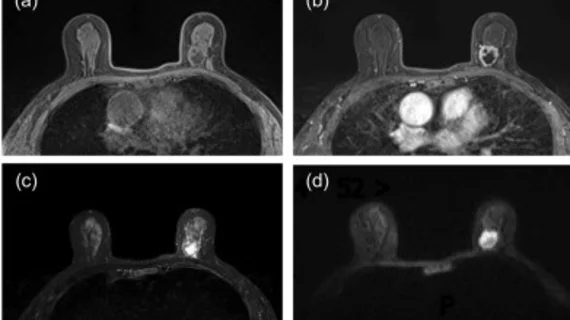MRI radiomics could change the future of breast cancer treatment
The use of radiomics could change the future of how care plans are managed for patients who are diagnosed with breast cancer by identifying patients most likely to benefit from specific treatments.
A new meta-analysis shared in the European Journal of Radiology definitively concluded that the use of radiomics can improve the identification of patients who would respond most favorably to neoadjuvant chemotherapy (NAC) based on data derived from breast MRI exams. Corresponding author JPM O’Donnell, a radiology specialist trainee based at Galway University Hospital in Ireland, and co-authors shared that, when radiomic methodologies are applied to breast MRI exams later in NAC treatment, they significantly improve the prediction of who will achieve pathological complete response (pCR) [1].
“Specific to oncology, a tumor image series is segmented with hundreds of quantitative imaging features extracted, derived from tumor shape, texture, and kinetics, often referred to as the ‘radiomic signature.’ As breast MRI is already an established integral staging tool in breast cancer it is compelling to establish any value of breast tumor radiomic analysis that could contribute to improving predictive accuracy of pCR,” the authors suggested.
The new analysis consisted of 14 studies with radiomic data from 2,722 breast cancers. In all, nine strategies were compared, including those using biomarker parameters, radiomic analyses conducted before, during and after NAC, in addition to strategies that combined multiple scans.
Experts found that, other than pre-NAC radiomics, all other MRI derived radiomic features improved predictive accuracy in comparison to biomarkers. Mid- and post-NAC MRIs were observed to be the most accurate but combining multiple MRIs did not improve predictive value.
“The results suggest that using radiomic features to predict pCR to NAC in breast cancer is extremely promising when compared to clinicopathological and immunohistochemical parameters alone,” the authors stated, while also reiterating that the predictive value is dependent on the timing of the scans in relation to NAC.
The authors suggested that, in the future, standardized radiomic signature processes are needed to inform decisions pertaining to treatment.

